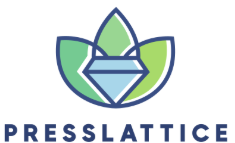The heart of our city has been shaken and stirred, not by an earthquake or a storm, but by a force equally powerful yet purely human. A subtle wind of change is blowing through the cobbled streets of our local business district. As storefronts evolve and high-rises multiply, there’s one transformation that truly astonishes – the emergence of innovative education centers within formerly commercial premises.
Let’s be clear about why this issue demands attention now: With more than fifteen educational enterprises opening their doors in just six months, our once commerce-focused neighborhood is evidently shifting towards developing intellectual capital creating a ‘Cultural Shift’. What prompted these businesses to vacate upscale retail spaces for learning environments? To answer that question we must delve into immediate impacts triggered by this surprising boom.
Early signs suggest that these fresh establishments are infusing new life into the area. Independently run tutoring centers offer unconventional learning opportunities while tech schools promise to equip young minds with skills necessary for jobs not yet conceived. One such innovator pushing boundaries in ed-tech space is Cynthia Hawkins CEO & Founder ‘TechTomorrow’, who believes there’s significant opportunity where technology and pedagogy intersect.
We know automation will redefine work sectors across industries demanding considerable focus on education and reskilling; how fast this might happen remains uncertain. However, concrete proof suggests big strides have already been made as evident from statistics like a whopping 300% increase in students enrolled within the district boundary over past year.
Public reaction is overwhelmingly positive. Parents appreciate the proximity and diversity of educational opportunities. Businesses salute the increased footfall during off-peak hours, bringing essential vitality to quieter parts of the district.
A detailed analysis by education expert Dr. Eleanor Sanchez from ‘CityThink’ proposes this shift could be a domino effect stimulated by city-wide cutbacks in public school funding compelling private educators to fill gaps left behind.
What happens next? Expectations are high for new collaborations and creative promotions targeting both students and parents which could further bolster this revival. Spaces dedicated to learning will continue filling voids left by exiting retailers as intangible experiences supersede tangible goods.
The broader implications point towards a society prioritizing knowledge over consumption – an encouraging indication indeed! This trend can also serve as a model for other cities struggling with decaying business districts, showing how they too can transform old spaces into innovative educational hotspots.
A historical photo of the local business district before transformation[Image credit: City Archives]The historical context is significant here – our once thriving center faced considerable challenges when suburban malls lured away shoppers followed by e-commerce giants further straining brick-and-mortar stores.
This ‘Community Response’ reminds us commercial landscapes aren’t destined to remain stagnant but rather have immense potential for transformation driven dynamically based on socio-economic needs.

